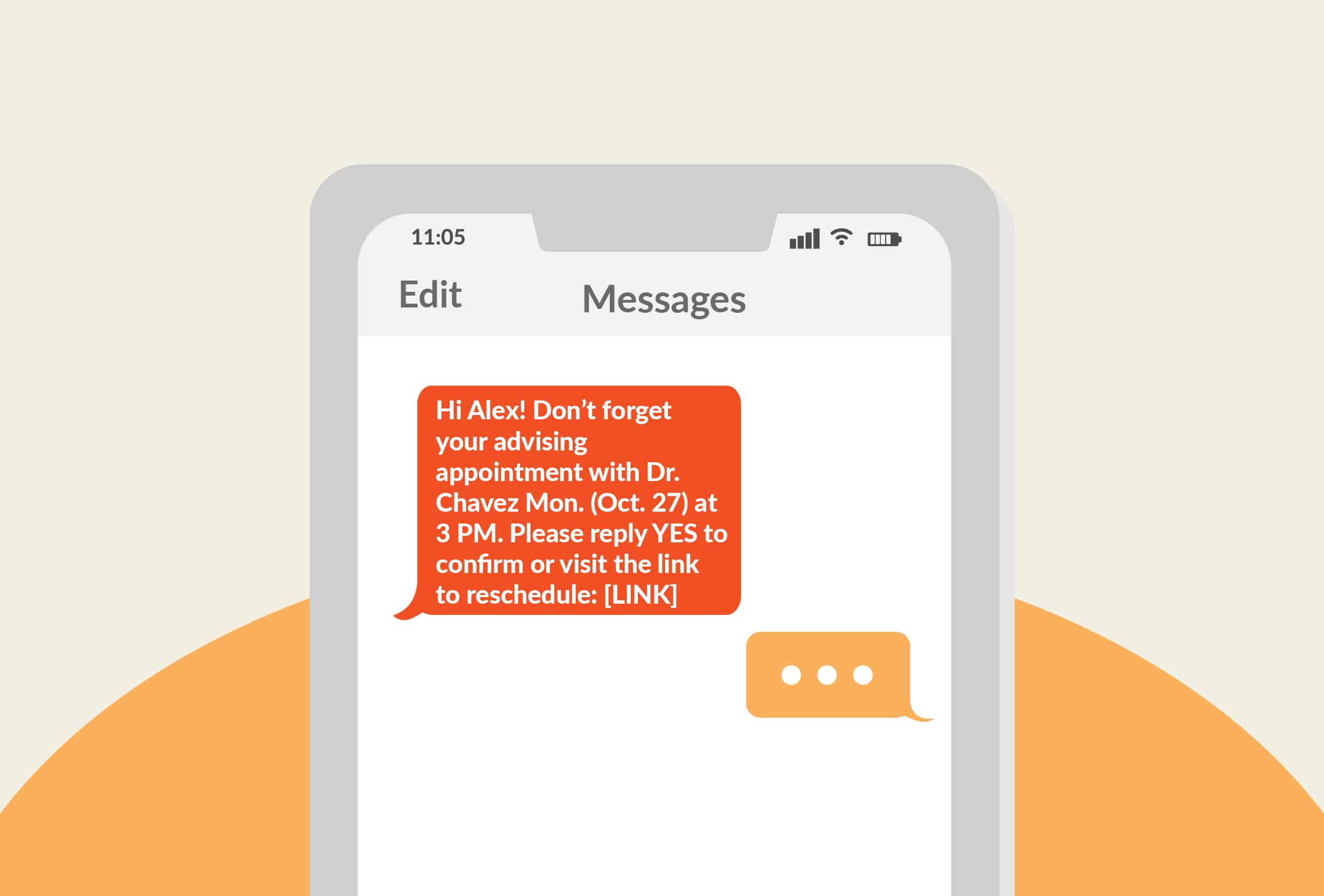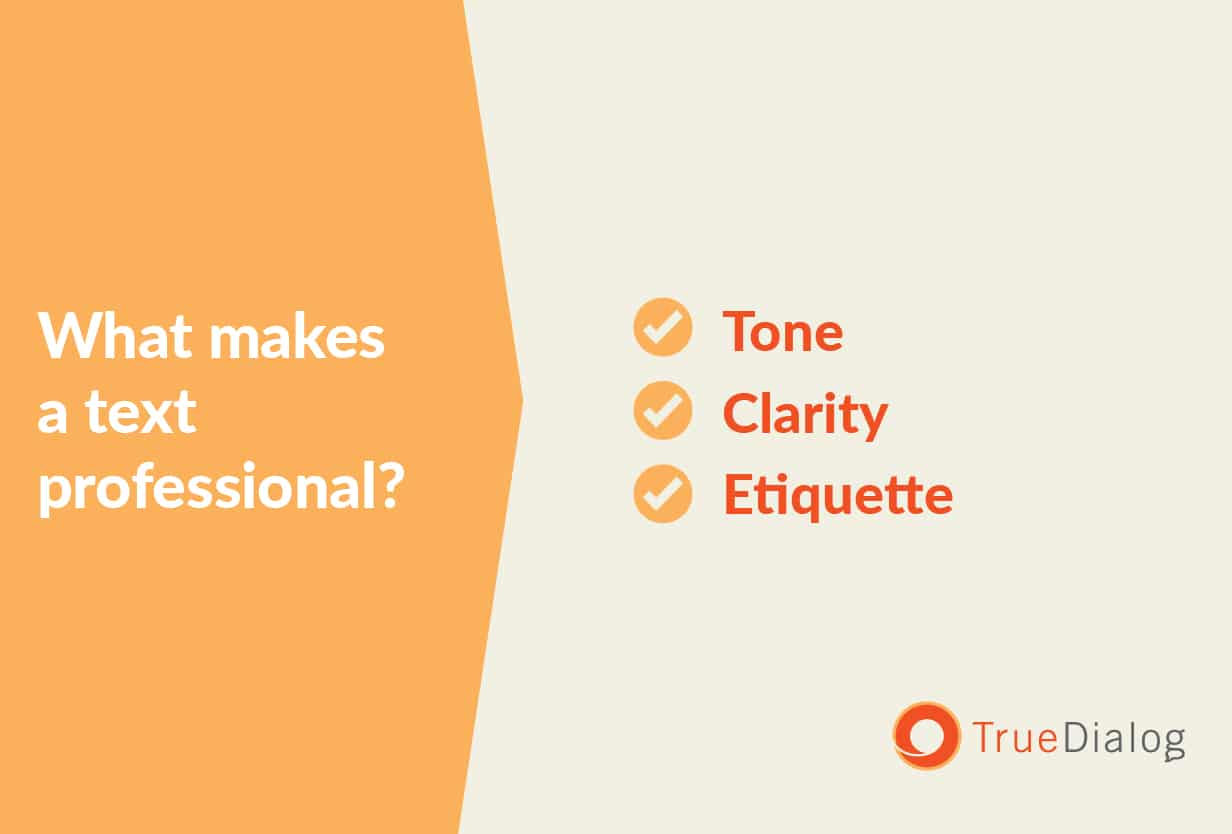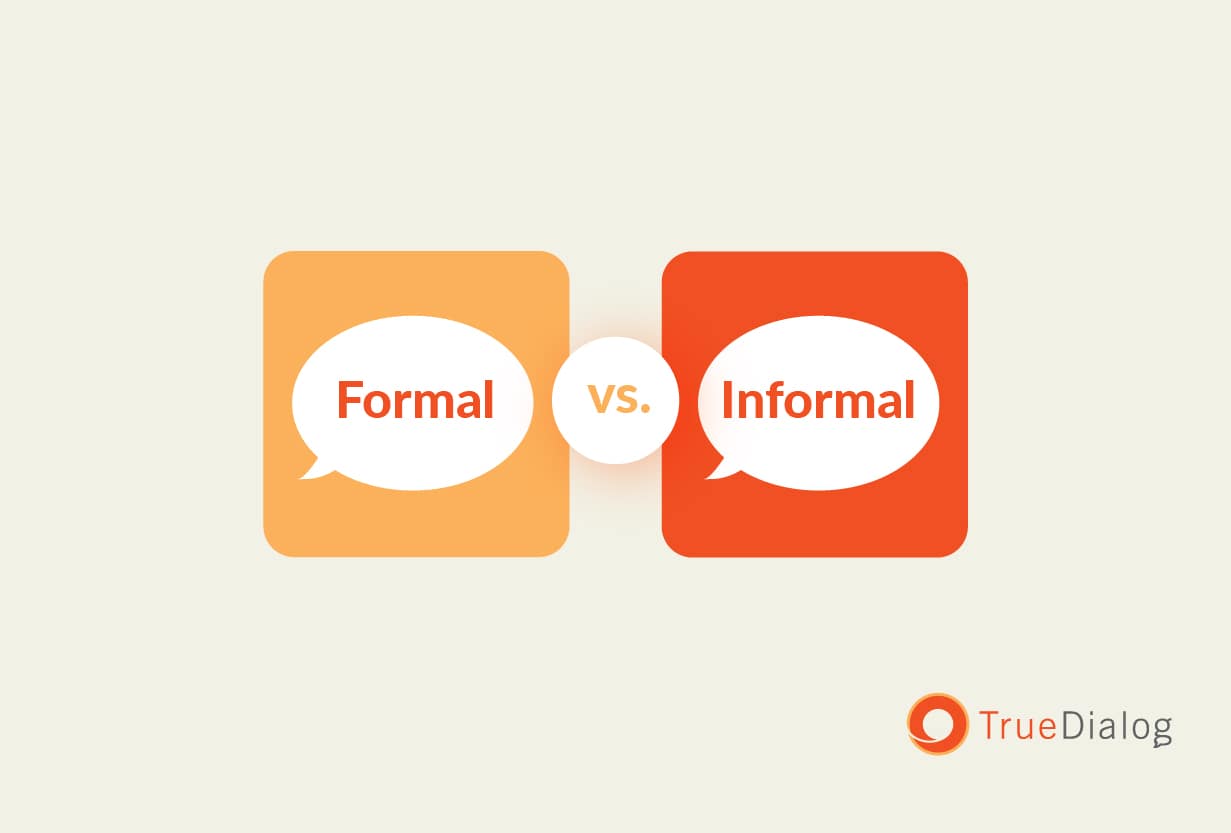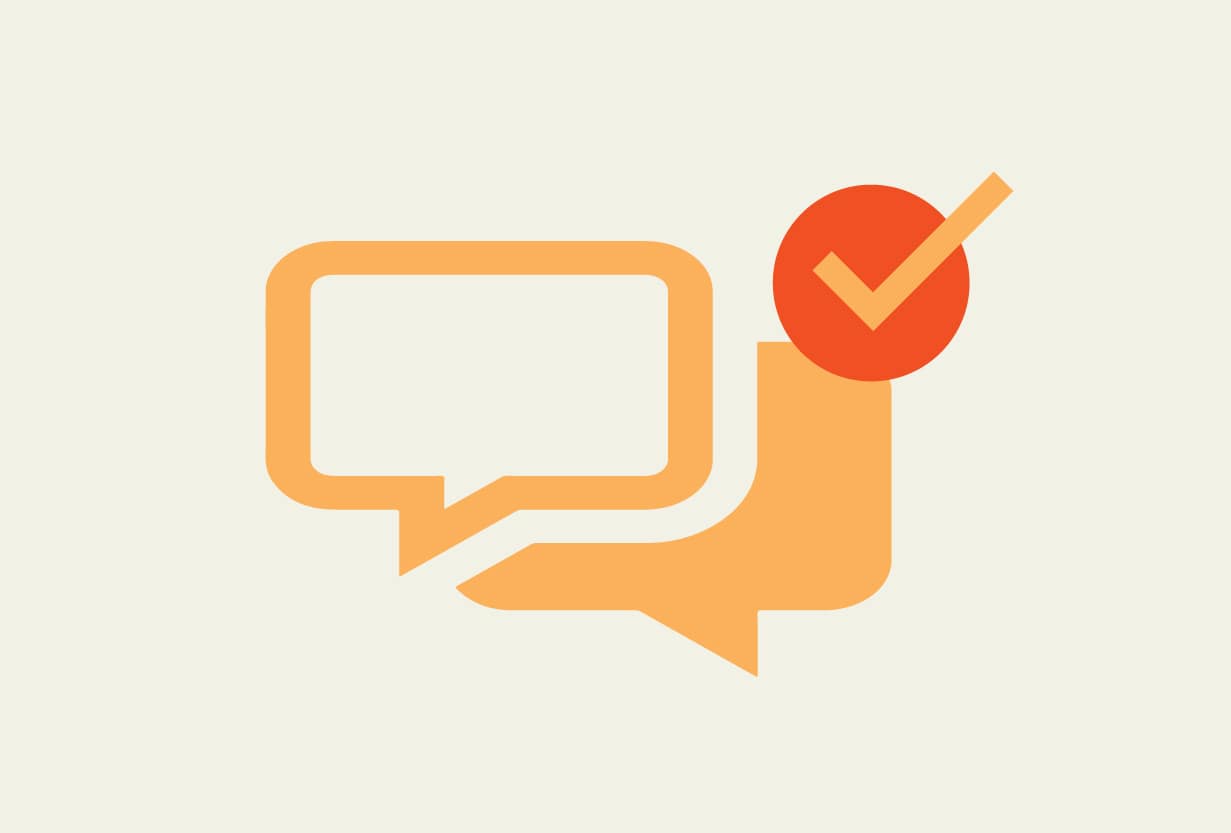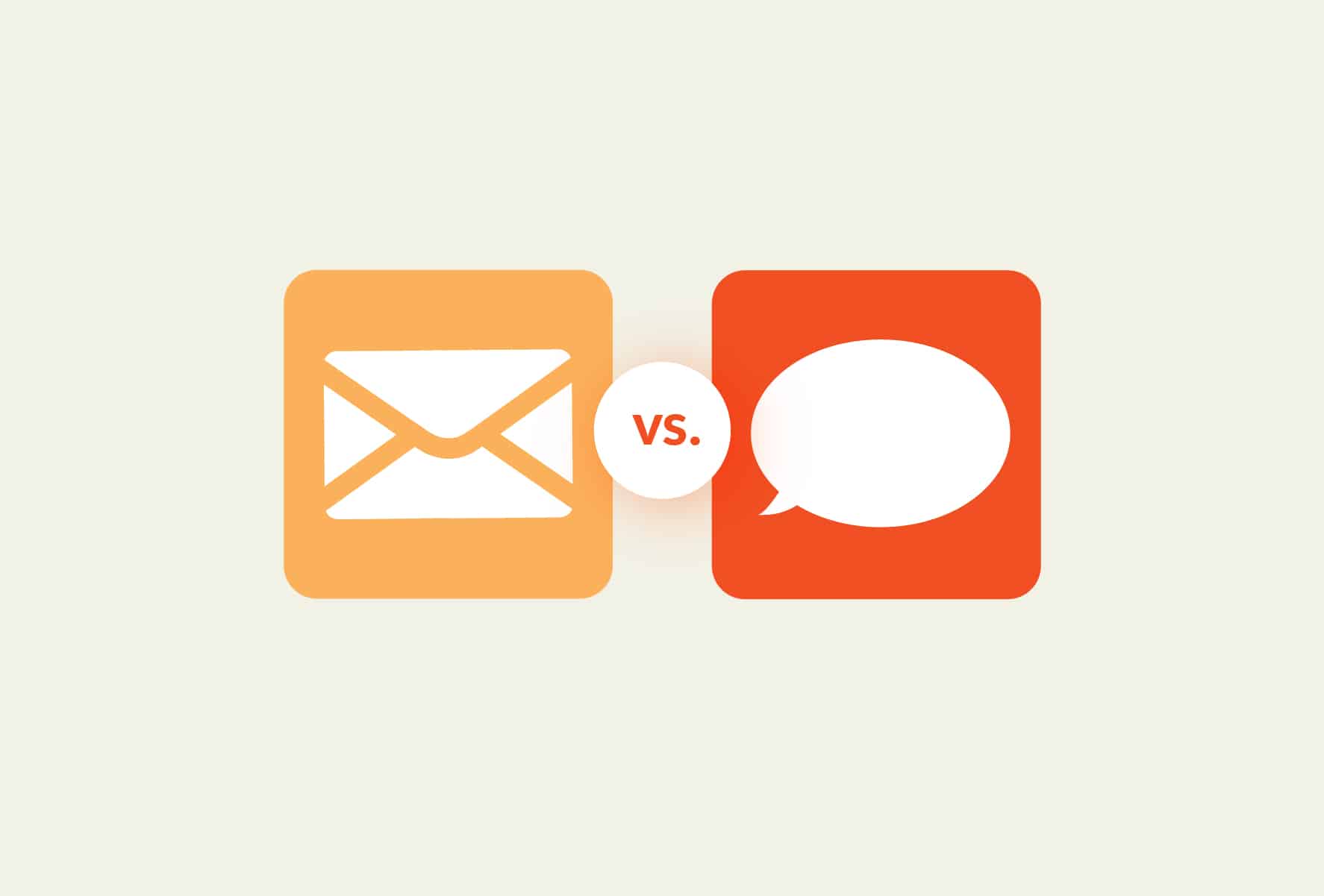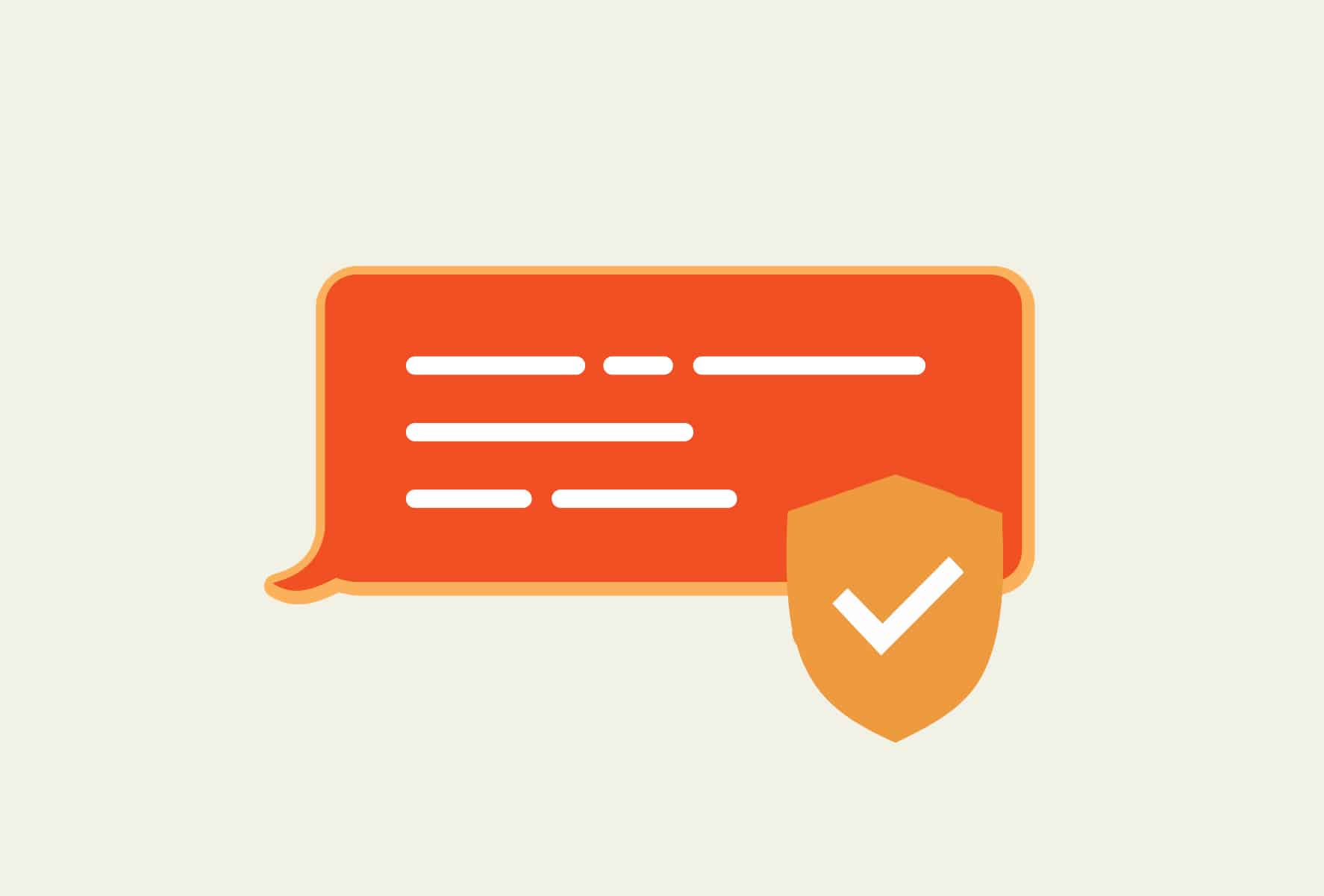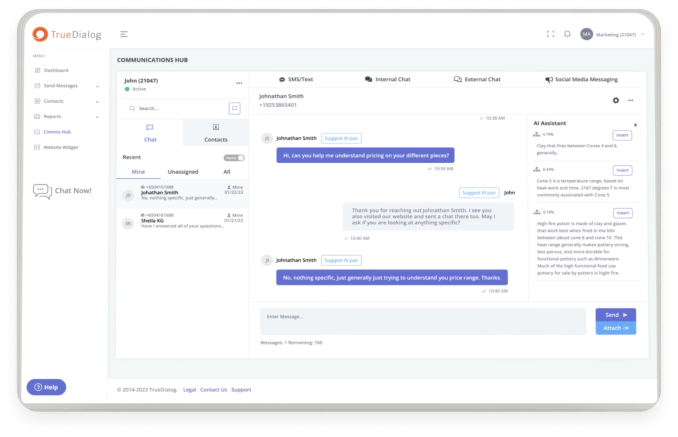From an outsider’s perspective, texting your audience seems easy. Just type a quick message, check for typos, fire it off, and wait for the revenue to roll in — right?
If only it were that simple.
The truth is, sending a well-composed, polished, and engaging text message takes careful consideration and word-smithing — not to mention, a thorough understanding of which words or phrases trigger carrier spam filters and a mass texting solution that reliably delivers messages when contacts expect them.
Every message you send is a reflection on your organization and has the potential to influence how each recipient interacts with your brand. The good news is that, when they hit the mark, SMS messages generate exceptional conversion rates.
To help you drive the results you want, we’re sharing insight into what works, what doesn’t, and several professional text message examples to inspire your next campaign.
What Makes a Text Message Professional?
It’s a common misconception that composing a professional text message is easy because it’s short: just two or three lines. The truth is, limiting the length of a message only makes it more challenging to write. (So goes the quote often attributed to Mark Twain, “I didn’t have time to write a short letter, so I wrote you a long one.”)
With only 160 characters at your disposal, you have to make every word count.
Tone, Clarity, and Etiquette
Here are three things to keep in mind as you craft your text messages:
- Tone
Think of tone as the “emotional temperature” of a message, or the attitude you want to convey. Typically, a message’s tone is influenced by not only your brand but also the channel you’re using to deliver it. Texts are innately more casual than, say, a service agreement — but they shouldn’t be so colloquial that your messages sound unprofessional and sloppy. (If you’re not sure where to start, consider the tone you use in your brand’s email campaigns or social media posts.)
- Clarity
SMS has always been a means of quick communication, and when recipients open a message, they expect to grasp the gist in seconds. There’s no room for filler words or ambiguity here — you have to get to the point fast, and use simple, easy-to-understand language. While abbreviations are expected (given the limited space), it’s crucial you only use ones that you know your audience will understand, and avoid jargon (unless, again, it’s in your recipient’s vernacular). - Etiquette
Remember that access to someone’s text inbox is a privilege, not a right, and they can revoke it at any time. Getting consent before texting, introducing your business in the first message, observing “quiet hours” (9 p.m. to 8 a.m. in the recipient’s time zone), and providing clear opt-out instructions aren’t just required by industry regulations — they’re also good business practices. And while messaging frequency is less regulated, it’s still equally important since inundating your recipients with too many messages will get your brand swiftly blocked.
Note: Keeping up with security and compliance requirements can be challenging, especially if you rely on manual processes. But using a text messaging service like TrueDialog will help you mitigate your regulatory risk and observe good texting etiquette. Thanks to built-in safeguards designed to help you meet industry standards and reporting that tracks opt-ins and opt-outs, it’s much easier to protect your business and provide a positive customer experience.
When to Use Formal vs. Casual Language
Professional messaging doesn’t necessarily always mean your texts have to sound buttoned-up and businesslike. Deciding whether to use formal or casual language depends on who you’re texting, what you’re texting about, and your brand’s voice.
Here are a few professional text message examples to illustrate circumstances when you might want to use a formal tone versus scenarios when a more casual-sounding message makes sense.
When to use formal language:
- Sharing legal, billing, or contractual information, such as a software company messaging users about changes to the product’s terms of service.
- Communicating critical information, such as a university sending a campus safety alert or a financial institution notifying a customer about potentially fraudulent activity on their account.
- Following up after a missed appointment, such as an academic adviser’s office reaching out after a student failed to show up for a meeting.
- Discussing topics that may be serious to a contact, such as addressing a concern or providing technical support via 2-way messaging.
When to use casual language:
- Launching a campaign to generate interest in an event, such as a B2B tech company sending invites for an upcoming webinar.
- Promoting a limited-time offer, sale, or exclusive deal, such as a sports venue announcing a flash sale on season passes.
- Nudging users to complete a sign-up or text-to-vote campaign, such as a university texting students to participate in a poll about dining hall offerings.
- Marketing a new product or offering, such as a bank announcing a new account type or online banking feature.
How to Text Someone for the First Time Professionally
First impressions matter — in every professional scenario, but especially in SMS marketing, when flubbing the first message could get your business communications marked as spam, blocked, or unsubscribed.
Here are a few tips to help you send professional texts while also laying the groundwork for long-term engagement (and a few templates that put these tips into practice).
Tips for Business Introduction Messages
Whether you’re launching your first mass texting campaign or communicating with a new subscriber for the first time via SMS, it’s important to keep all intro messages concise, informative, and clear.
Here’s how:
- Identify yourself immediately
Make sure your recipients know who is contacting them. If you don’t use your business name early in the message, they might assume it’s spam. - Make the message feel personal
Even though intro messages are usually automated, it’s a good idea to personalize them and use warm, welcoming language so the recipient knows there’s someone else on the other end. And using a tool like TrueDialog makes this easier. Because the solution natively integrates with leading CRMs and marketing automation platforms, you can automatically fill in personalization tokens and fields to customize messages at scale. - Offer clear next steps
Let your contacts know what to expect from your messages and if there are any other steps they need to take (i.e., responding to a message to complete an opt-in process).
Initial Outreach Templates
Here are a few business text messaging examples that you can repurpose as templates for your SMS marketing program:
Standard intro message:
Hi [NAME]! [BUSINESS NAME] here. You’re subscribed to marketing texts. Expect 2 – 4 msgs/month. Reply HELP for support or STOP to cancel. Msg & data rates may apply.
First personal message from an individual at an organization:
Hi [NAME]! It’s [NAME] with [BUSINESS NAME]. Just wanted to introduce myself and let you know I’m here to answer any questions. Anything I can help with today?
Two-part intro for double opt-in confirmation
[BUSINESS NAME] here. Reply Y to subscribe to our recurring marketing texts.
(Then, if contact responds with a “Y”)
Welcome [NAME]! ☺️ Glad to have you here. Head’s up: msg & data rates may apply. Msg frequency will vary. Reply HELP for support or STOP to cancel.
Common Business Texting Scenarios and Examples
Here are a few reasons why a business might choose to text a contact (as opposed to using another channel), and a few examples of professional text messages for each SMS use case:
Appointment Reminders and Confirmations
No-shows and late arrivals can disrupt internal scheduling and eat into your organization’s margins. However, manually calling every contact to remind them about their upcoming appointment can be extremely time-consuming — and email reminders often get buried in crowded inboxes.
Reminder texts, on the other hand, are a much more efficient and reliable method for keeping appointments top-of-mind.
Example:
Hi Alex! Don’t forget your advising appointment with Dr. Chavez Mon. (Oct. 27) at 3 PM. Please reply YES to confirm or visit the link to reschedule: [LINK]
Customer Service and Support
SMS is perfect for providing customer support, closing feedback loops, and keeping contacts up to date on things like tech support tickets, shipping, and order status. Since most people keep their devices with them nearly all of the time (and check their notifications as often as every few minutes), it’s less likely they’ll miss an important update than if you were to share it via another channel.
Example: Hi Priya — your ticket #1278 has been logged with our tech support team, and a specialist will follow up in the next hour. Thank you for your patience!
Promotions and Special Offers
Sending a text is a great way to help build a sense of excitement and urgency around a sale or offer, without sounding spammy or aggressive. In these cases, you can use slightly more casual language (depending on your brand) and an upbeat tone. Just be sure to finish with a clear call to action.
Example: Psst, Lee! 👀 As a VIP, you get 15% off official team merch on game days! Check out the latest drop and use code VIP2025 at checkout: [LINK]
How TrueDialog Helps You Stay Professional at Scale
Whether you want to send a formal text message or a more casual professional SMS campaign, it’s crucial you leverage the right tech. While things like tone, clarity, timing, frequency, and language are all essential considerations, it’s also vital that your texts are reliable.
Here are a few ways TrueDialog helps your organization look polished, professional, and trustworthy — even when you’re sending messages to thousands or millions of people at once.
2-Way Messaging for Real-Time Conversations
Text messaging gives you direct, one-on-one access to individual members of your audience so you can connect on a personal level, strengthen customer relationships, and resolve issues faster than ever. However, it’s not always clear how to send a professional text that feels personal — especially when you’re juggling numerous other customer interactions.
Fortunately, TrueDialog makes it easy to keep up with a high volume of two-way conversations by giving you access to a library of AI-generated responses customized for your business, pre-written templates, dynamic content functionality, and an automated inbox attendant.
Manage Contacts with Ease
It can be challenging to manually manage contacts — especially as your SMS program grows and more people opt in to receive your messages. But TrueDialog helps keep your lists organized, and thanks to native integrations with leading CRMs and marketing automation software, it’s also easy to import, edit, and sync lists across platforms. Additionally, the dynamic contact list feature makes it easy to segment your lists quickly and precisely (without needing to create a new list for each campaign).
Ensure Delivery Every Time
Reliability and professionalism go hand-in-hand. When texts arrive late (or don’t arrive at all), your contacts may begin to lose confidence in your brand — or, at the very least, lose confidence in your ability to reliably communicate via text. (This is especially true when someone is waiting on something time-sensitive, like a code to complete two-factor authentication or a link to access a pre-sale.)
That’s why TrueDialog is committed to superior SMS deliverability. Unlike other providers that rely on third-party CPaaS tools, TrueDialog maintains direct connections with mobile carriers to help reduce message failures and service throttling. Plus, the solution’s proprietary AI-powered TrueDelivery feature enables you to check your message content against carrier spam filters and gives you a chance to update flagged content. This way, you can rest assured that your messages will reach their intended recipients.
Send Professional Texts with Ease
In short, sending polished, professional, and clear text messages reflect well on your brand and help boost engagement. And choosing the right enterprise SMS solution is key to making sure your messages consistently land in your contacts inboxes on time.
By drawing inspiration from the professional text message examples shared above, following our best practices for tone, clarity, and etiquette — and partnering with a platform like TrueDialog — you’ll be on your way to higher conversion rates and stellar long-term results.

